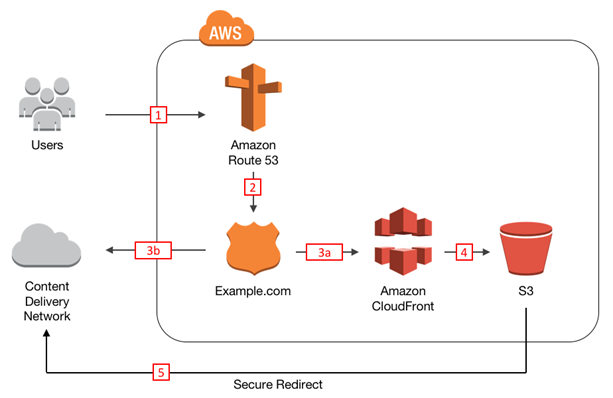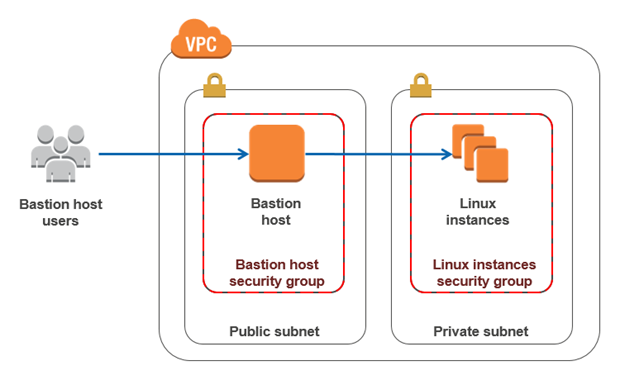AWS Security Blog
Category: Networking & Content Delivery
How to Help Protect Dynamic Web Applications Against DDoS Attacks by Using Amazon CloudFront and Amazon Route 53
Using a content delivery network (CDN) such as Amazon CloudFront to cache and serve static text and images or downloadable objects such as media files and documents is a common strategy to improve webpage load times, reduce network bandwidth costs, lessen the load on web servers, and mitigate distributed denial of service (DDoS) attacks. AWS […]
How to Protect Your Web Application Against DDoS Attacks by Using Amazon Route 53 and an External Content Delivery Network
Distributed Denial of Service (DDoS) attacks are attempts by a malicious actor to flood a network, system, or application with more traffic, connections, or requests than it is able to handle. To protect your web application against DDoS attacks, you can use AWS Shield, a DDoS protection service that AWS provides automatically to all AWS […]
Updated Whitepaper Available: AWS Best Practices for DDoS Resiliency
AWS is committed to providing you high availability, security, and resiliency in the face of bad actors on the Internet. As part of this commitment, AWS provides tools, best practices, and AWS services that you can use to build distributed denial of services (DDoS)–resilient applications. We recently released the 2016 version of the AWS Best […]
How to Record SSH Sessions Established Through a Bastion Host
A bastion host is a server whose purpose is to provide access to a private network from an external network, such as the Internet. Because of its exposure to potential attack, a bastion host must minimize the chances of penetration. For example, you can use a bastion host to mitigate the risk of allowing SSH […]
How to Set Up DNS Resolution Between On-Premises Networks and AWS by Using Unbound
In previous AWS Security Blog posts, Drew Dennis covered two options for establishing DNS connectivity between your on-premises networks and your Amazon Virtual Private Cloud (Amazon VPC) environments. His first post explained how to use Simple AD to forward DNS requests originating from on-premises networks to an Amazon Route 53 private hosted zone. His second […]
How to Optimize and Visualize Your Security Groups
September 9, 2021: Amazon Elasticsearch Service has been renamed to Amazon OpenSearch Service. See details. May 3, 2017: We published a related blog post also written by Guy Denney, How to Visualize and Refine Your Network’s Security by Adding Security Group IDs to Your VPC Flow Logs. Many organizations start their journey with AWS by experimenting […]
How to Prevent Hotlinking by Using AWS WAF, Amazon CloudFront, and Referer Checking
At some point, you might have to deal with hotlinking: when third parties embed in their websites the content they find on your websites. The third-party website does not incur the cost of hosting the content, which means your website can end up paying for the content other sites use. Now, you can use AWS […]
How to Reduce Security Threats and Operating Costs Using AWS WAF and Amazon CloudFront
Note from July 3, 2017: The solution in this post has been integrated into AWS WAF Security Automations, and AWS maintains up-to-date solution code in the companion GitHub repository. Some Internet operations trust that clients are “well behaved.” As an operator of a publicly accessible web application, for example, you have to trust that the clients […]
How to Set Up DNS Resolution Between On-Premises Networks and AWS Using AWS Directory Service and Amazon Route 53
As you establish private connectivity between your on-premises networks and your AWS Virtual Private Cloud (VPC) environments, the need for Domain Name System (DNS) resolution across these environments grows in importance. One common approach used to address this need is to run DNS servers on Amazon EC2 across multiple Availability Zones (AZs) and integrate them […]
How to Automatically Update Your Security Groups for Amazon CloudFront and AWS WAF by Using AWS Lambda
Note from April 1, 2021: Before implementing the steps in this blog post, please request an EC2 limit increase for “rules per security group.” Ask for 220 rules per security group in the AWS Region where your security groups will be. Note from December 3, 2019: The features and services described in this post have […]









